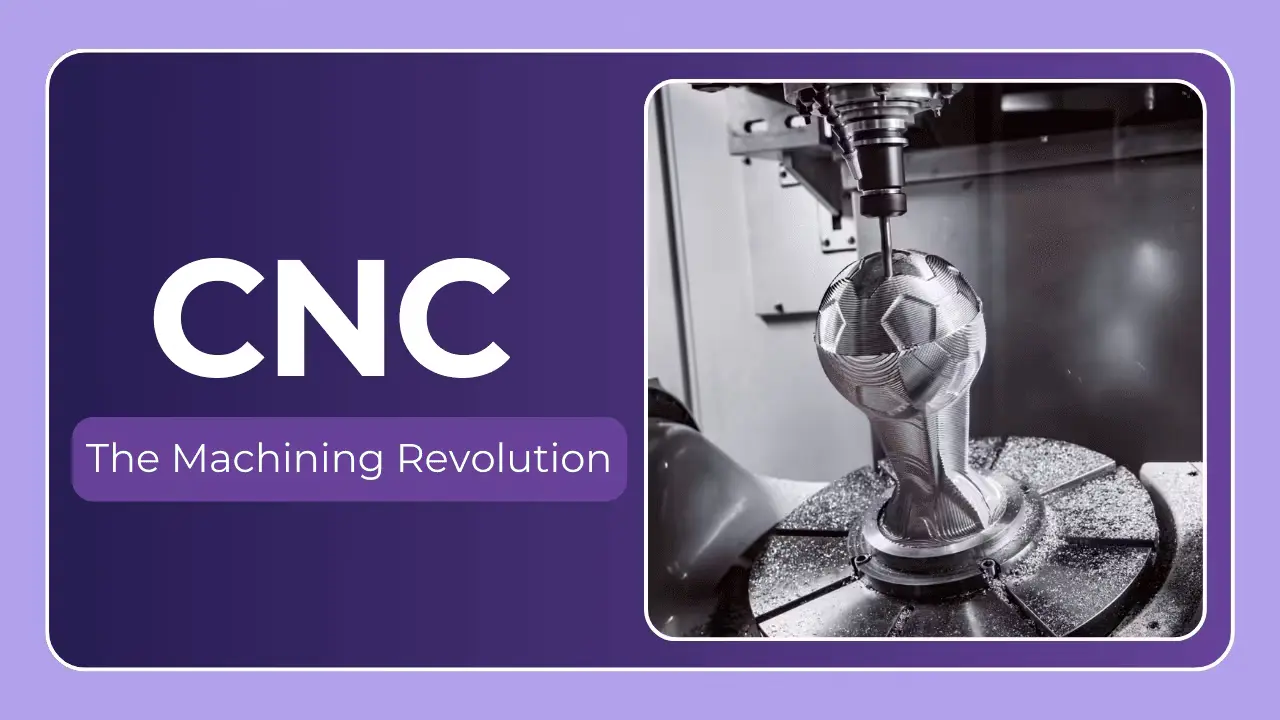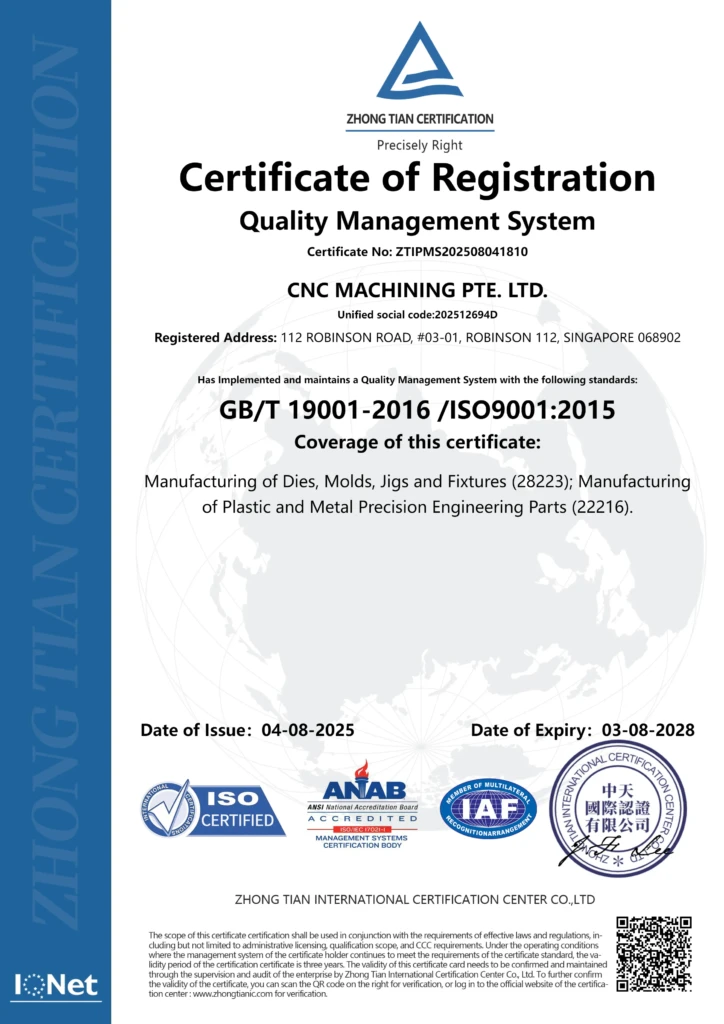Diving into the World of Small CNC Machining: A Comprehensive Guide
Small CNC machining is rapidly becoming the backbone of innovation across numerous industries. From prototyping and custom jigs to low-volume production runs and intricate component fabrication, its precision, speed, and versatility are redefining what’s possible. But navigating the world of Computer Numerical Control (CNC) machining, especially at a smaller scale, can feel daunting. This guide will break down everything you need to know, from understanding the process to choosing the right materials and a suitable partner – like CNC MACHINING PTE. LTD in Singapore – to bring your ideas to life.
What is CNC Machining and Why is Small-Scale Important?
At its core, CNC machining is a subtractive manufacturing process. This means material is removed from a solid block (the workpiece) using a variety of rotating cutting tools controlled by computer programming. Unlike traditional manual machining, which relies heavily on the skill of a machinist, CNC machines follow pre-programmed instructions, ensuring consistent accuracy and repeatability.
The “small” in small CNC machining refers to a few key factors:
- Part Size: Typically, we’re talking about components that can fit within a relatively compact workspace – think under 12 inches in any dimension.
- Production Volume: Small-scale CNC excels at prototyping, small batches (from 1 to hundreds of parts), and bridge manufacturing (filling gaps until large-scale production is established).
- Complexity: Smaller CNC machines, especially 5-axis models, can handle surprisingly complex geometries often beyond the capabilities of manual methods.
The CNC Machining Process: A Step-by-Step Breakdown
- Design & CAD Modeling: The process begins with a 3D model of the desired part created in Computer-Aided Design (CAD) software. Common software includes SolidWorks, Fusion 360, AutoCAD, and CATIA. The accuracy of this model is critical.
- CAM Programming: The CAD model is then imported into Computer-Aided Manufacturing (CAM) software. CAM software translates the design into machine-readable code (G-code) that tells the CNC machine how to move its tools. This involves defining toolpaths, cutting speeds, feed rates, and other crucial parameters. Popular CAM software includes Mastercam, GibbsCAM, and PowerMill.
- Material Selection: Choosing the right material is fundamental. (See the dedicated section below).
- Setup & Fixturing: The raw material is securely clamped or fixtured onto the CNC machine’s work table. Proper fixturing is essential for accuracy, stability, and safety.
- Machining: The CNC machine executes the G-code program, systematically removing material to create the desired shape. Different cutting tools are used for different operations (e.g., milling, drilling, turning).
- Deburring & Finishing: Once machining is complete, parts often require deburring to remove sharp edges or imperfections. Additional finishing processes like polishing, anodizing, or plating may be applied to enhance the part’s appearance, durability, or functionality.
Choosing the Right Material: A Broad Overview
The material selection depends heavily on the intended application of the part. Here’s a breakdown of common materials used in small CNC machining:
| Material | Common Applications | Pros | Cons | Typical CNC Processes |
|---|---|---|---|---|
| Aluminum (6061-T6) | Aerospace, automotive, consumer electronics, prototyping | Lightweight, strong, corrosion-resistant | Relatively soft — fewer intricate details | Milling, Turning |
| Stainless Steel (304/316) | Medical devices, food processing, marine applications | High corrosion resistance, durable | More difficult to machine, expensive | Milling, Turning |
| Brass | Electrical components, decorative parts, plumbing | Machinable, conductive, aesthetically pleasing | Lower strength than steel, tarnishes | Milling, Turning |
| Delrin (Acetal) | Gears, bearings, bushings, low-friction applications | Excellent wear resistance, dimensional stability | Can absorb moisture, lower temperature resistance | Milling, Turning |
| Nylon (PA6/PA66) | Gears, bushings, wear pads | Strong, flexible, good chemical resistance | Moisture absorption, dimensional instability | Milling, Turning |
| Titanium (Ti-6Al-4V) | Aerospace, medical implants, high-performance applications | Extremely strong, lightweight, biocompatible | Very expensive, difficult to machine | Milling |
| ABS Plastic | Prototyping, housings, enclosures | Cost-effective, easy to machine | Lower strength and temperature resistance | Milling |
Key CNC Machining Processes for Small Parts
- Milling: Uses rotating cutting tools to remove material from a stationary workpiece. Versatile for creating complex shapes, pockets, and slots.
- Turning: The workpiece rotates while a stationary cutting tool removes material. Ideal for cylindrical parts.
- Drilling: Creates holes in the workpiece.
- Tapping: Cuts internal threads in holes.
- EDM (Electrical Discharge Machining): Uses electrical sparks to remove material, often used for creating intricate shapes in hardened materials.
- 5-Axis Machining: Allows the cutting tool to approach the workpiece from multiple angles simultaneously. Significantly increases complexity and precision, enabling the creation of highly contoured parts. CNC MACHINING PTE. LTD specializes in advanced 5-axis machining.
Why Choose a Professional CNC Machining Service like CNC MACHINING PTE. LTD?
While it’s possible to invest in your own small CNC machine, for many projects, outsourcing to a professional service offers significant advantages:
- Cost-Effectiveness: Avoid the substantial upfront cost of equipment, tooling, maintenance, and skilled personnel.
- Expertise & Experience: Professional machinists have the knowledge and experience to optimize machining parameters, select the right tooling, and achieve precise results.
- Access to Advanced Equipment: Companies like CNC MACHINING PTE. LTD invest in cutting-edge technology, including 5-axis machines, allowing them to handle complex projects efficiently.
- Wide Range of Capabilities: One-stop shops offer a complete suite of services, including design assistance, material sourcing, machining, and post-processing. CNC MACHINING PTE. LTD provides this, including post-processing like finishing and surface treatments.
- Faster Turnaround: Dedicated facilities and experienced teams can often deliver parts faster than in-house machining.
- Scalability: Easily scale production up or down as your needs change.
The Importance of DFM (Design for Manufacturability)
Before submitting your design for machining, consider DFM principles. This involves optimizing your design to make it easier and more cost-effective to manufacture. Some key considerations include:
- Minimize Sharp Internal Corners: These can be difficult to machine and create stress points.
- Avoid Deep, Narrow Pockets: They can be challenging to evacuate chips from.
- Specify Tolerances Carefully: Tighter tolerances increase cost.
Communicating with your CNC machining partner early in the design process can help identify and address potential manufacturing challenges.
Conclusion: Empowering Innovation with Precision
Small CNC machining is a powerful tool for bringing innovative ideas to life. By understanding the process, carefully selecting materials, and partnering with a reliable service provider, you can unlock its full potential.
Whether you’re a startup prototyping a groundbreaking new product, an engineer needing specialized components, or a manufacturer seeking a flexible production solution, CNC MACHINING PTE. LTD in Singapore is ideally positioned to meet your needs. Their expertise in 5-axis machining, commitment to quality, and dedication to customer satisfaction make them a trusted partner for custom precision machining.
Don’t let manufacturing limitations hold you back. Customize your precision parts now at the best price! [Link to CNC MACHINING PTE. LTD Website]




